Juvenile head of Maxentius (?)
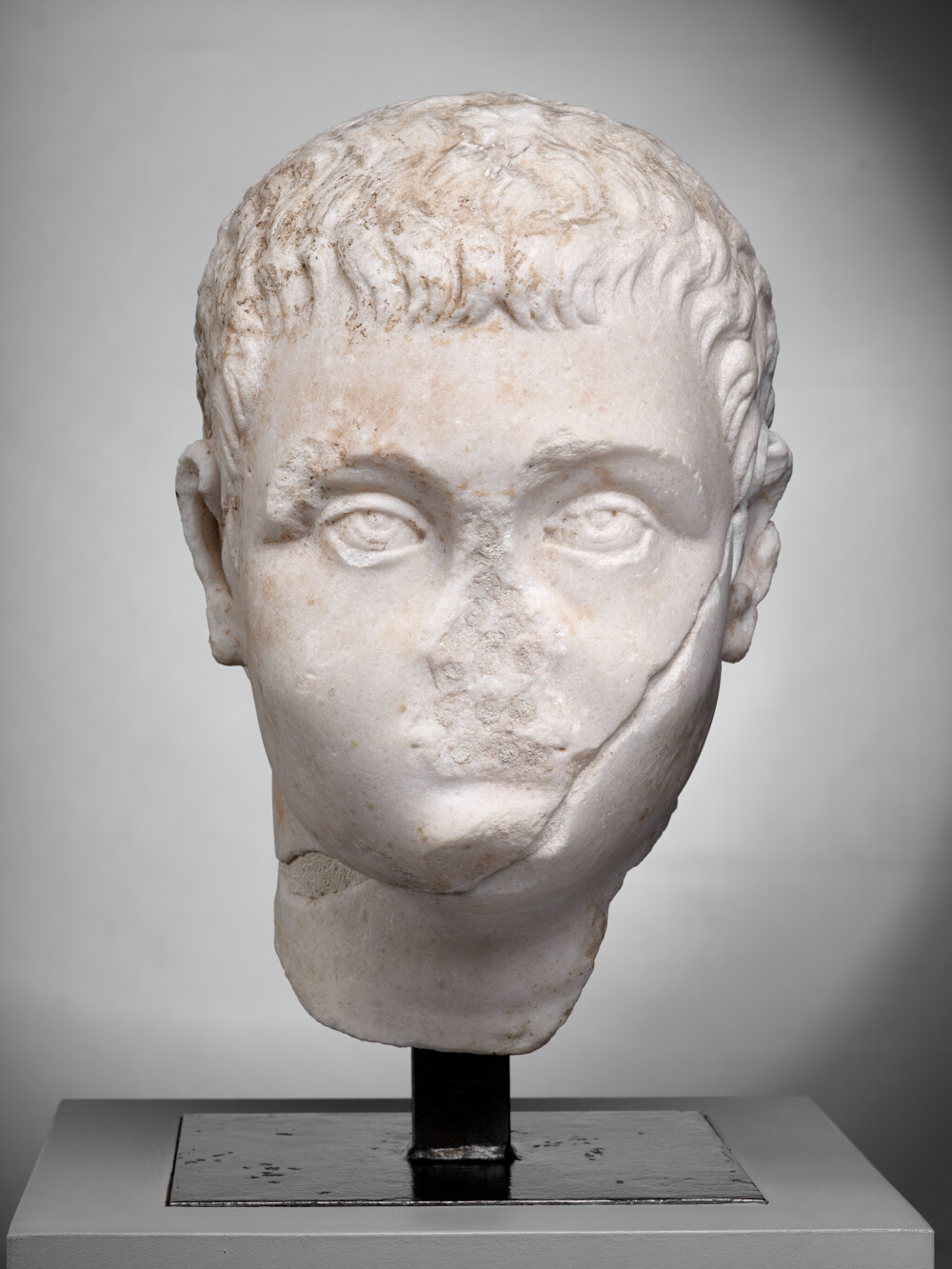
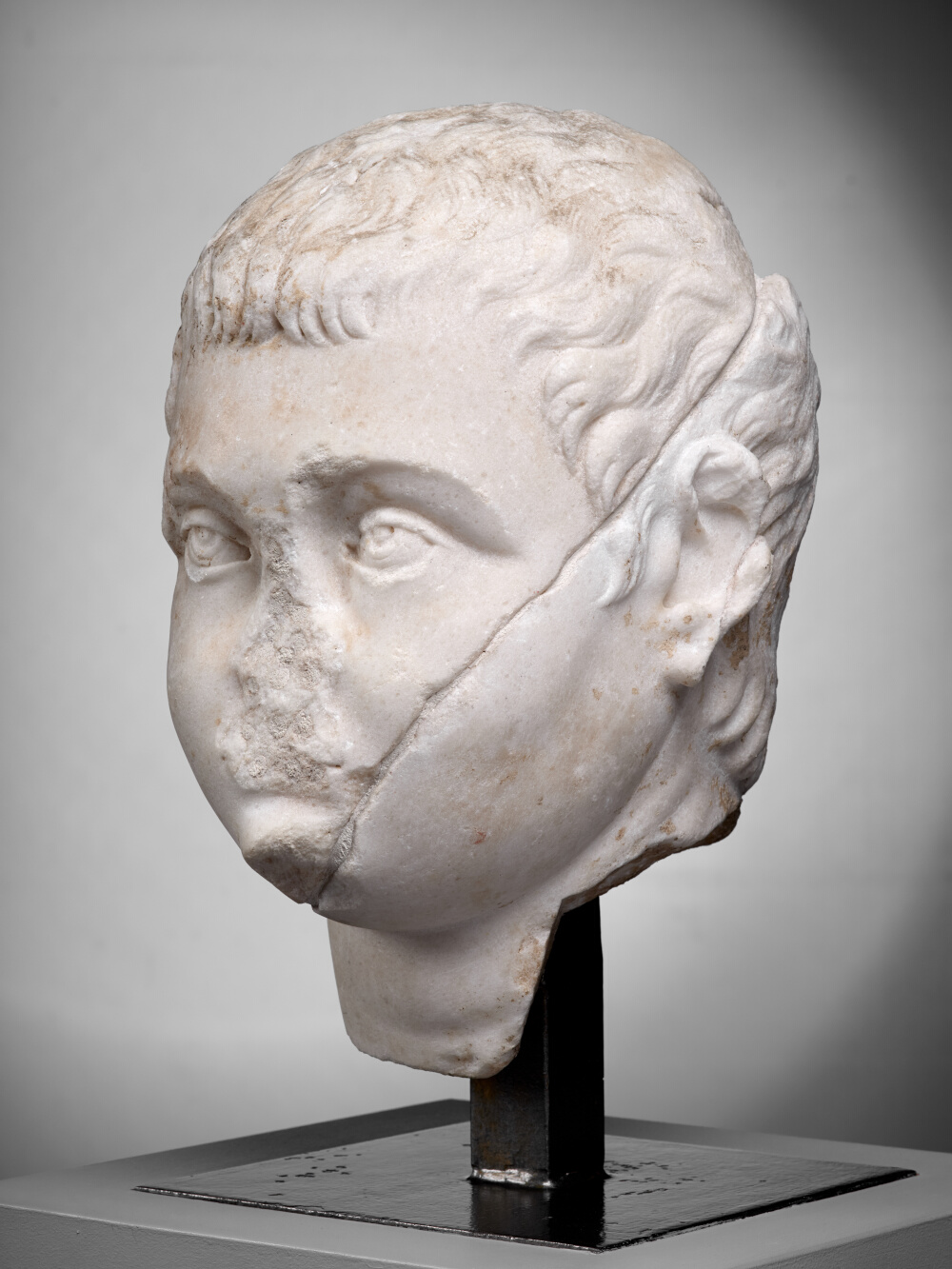
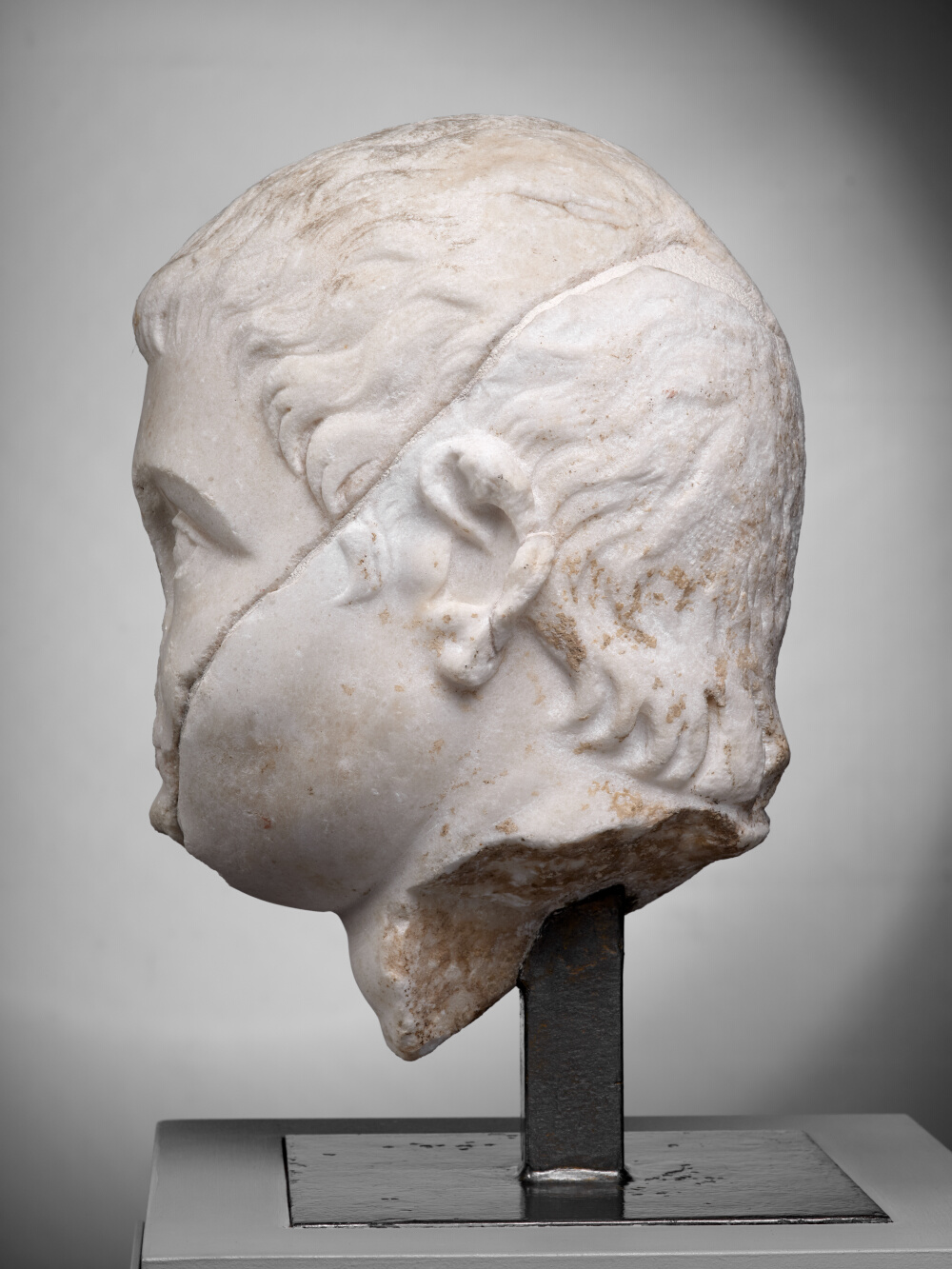
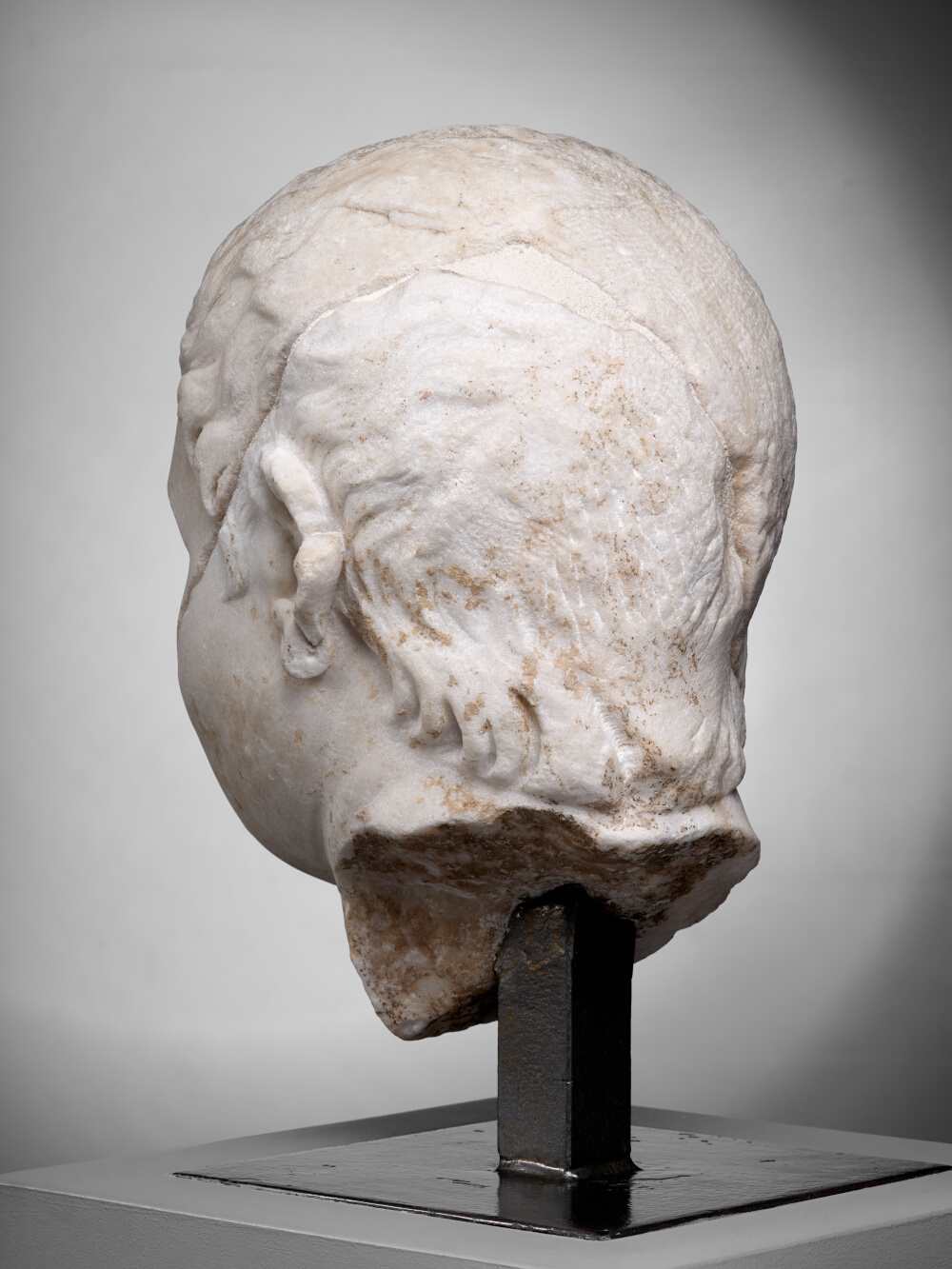
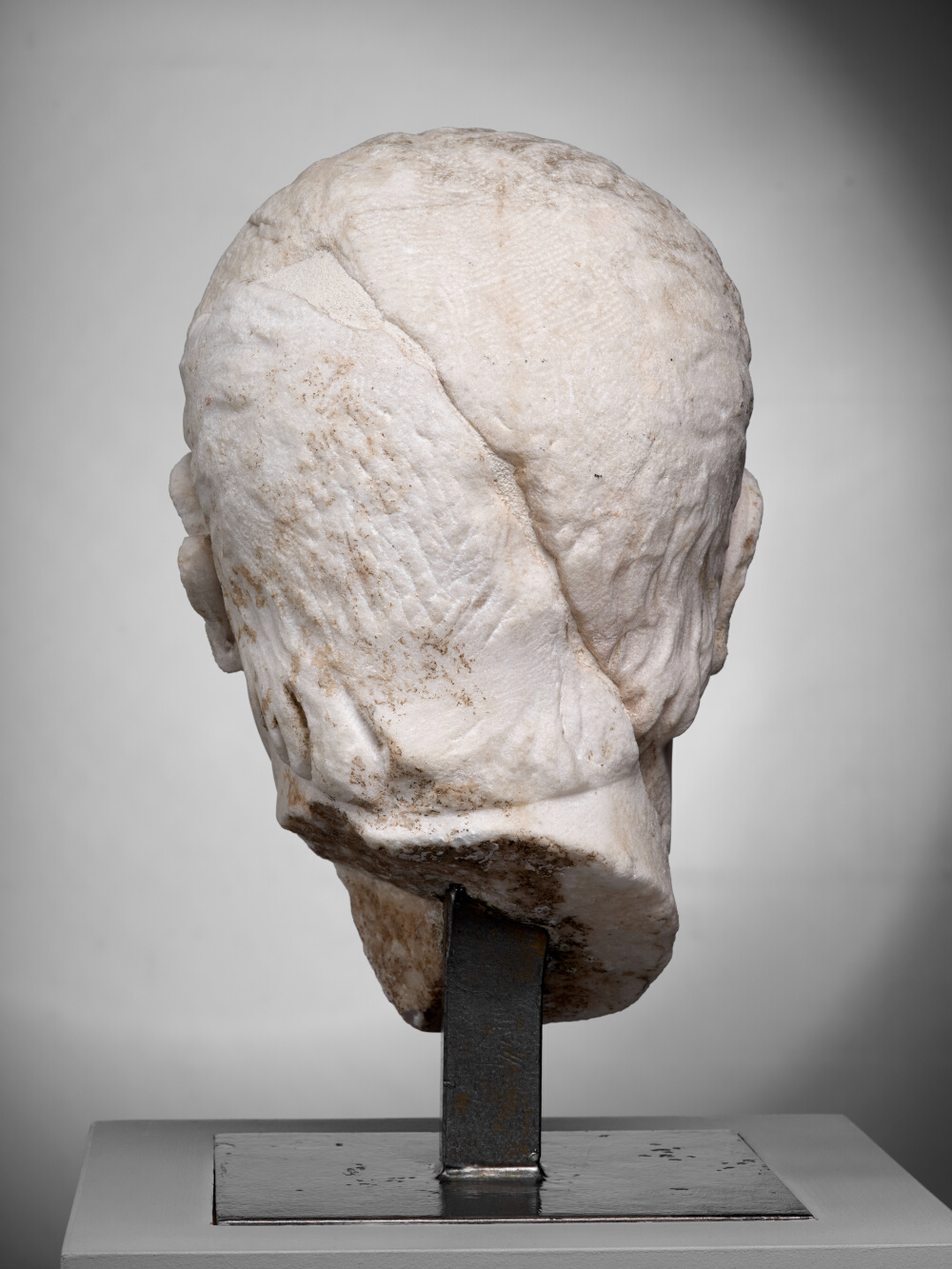
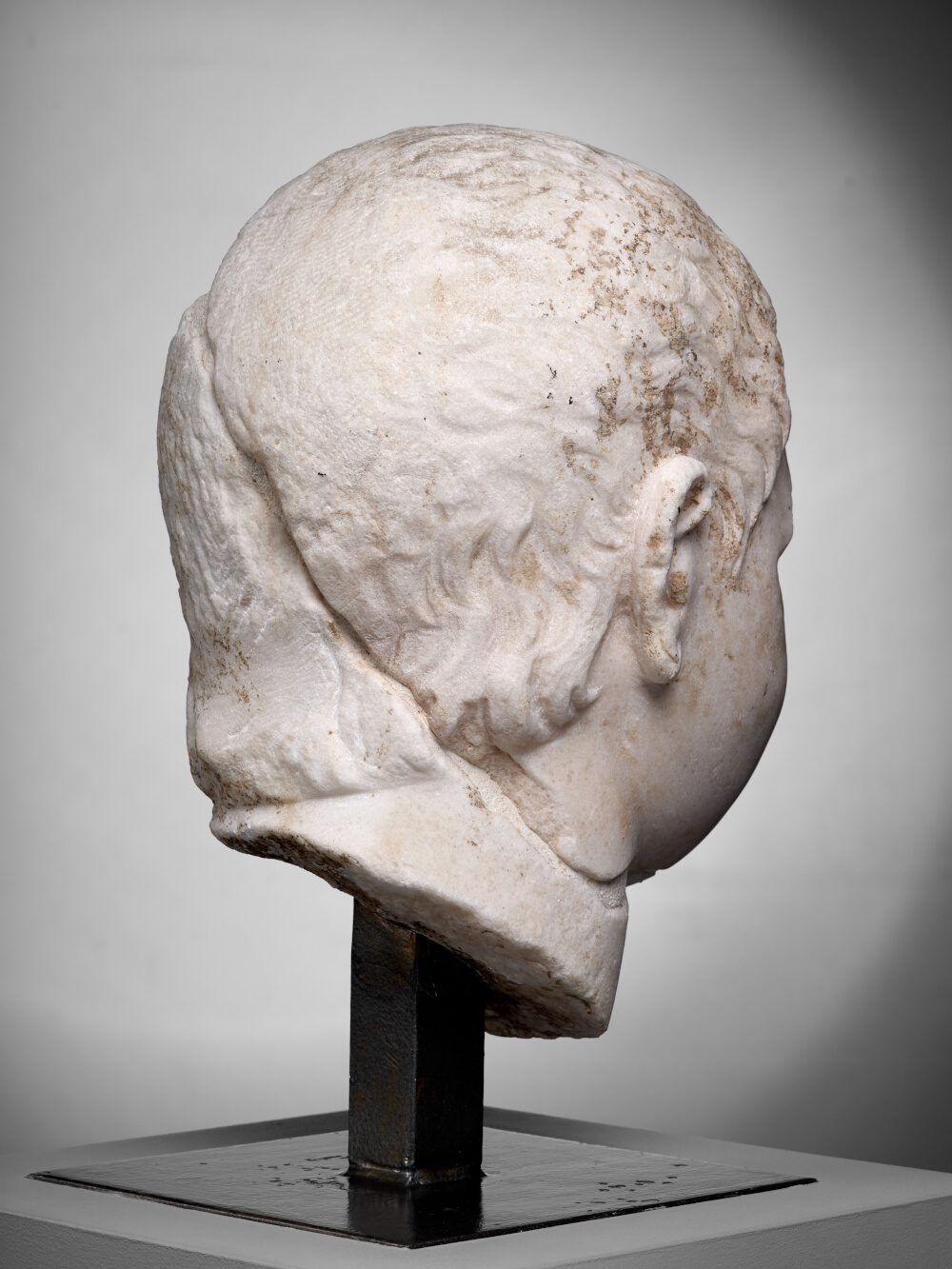
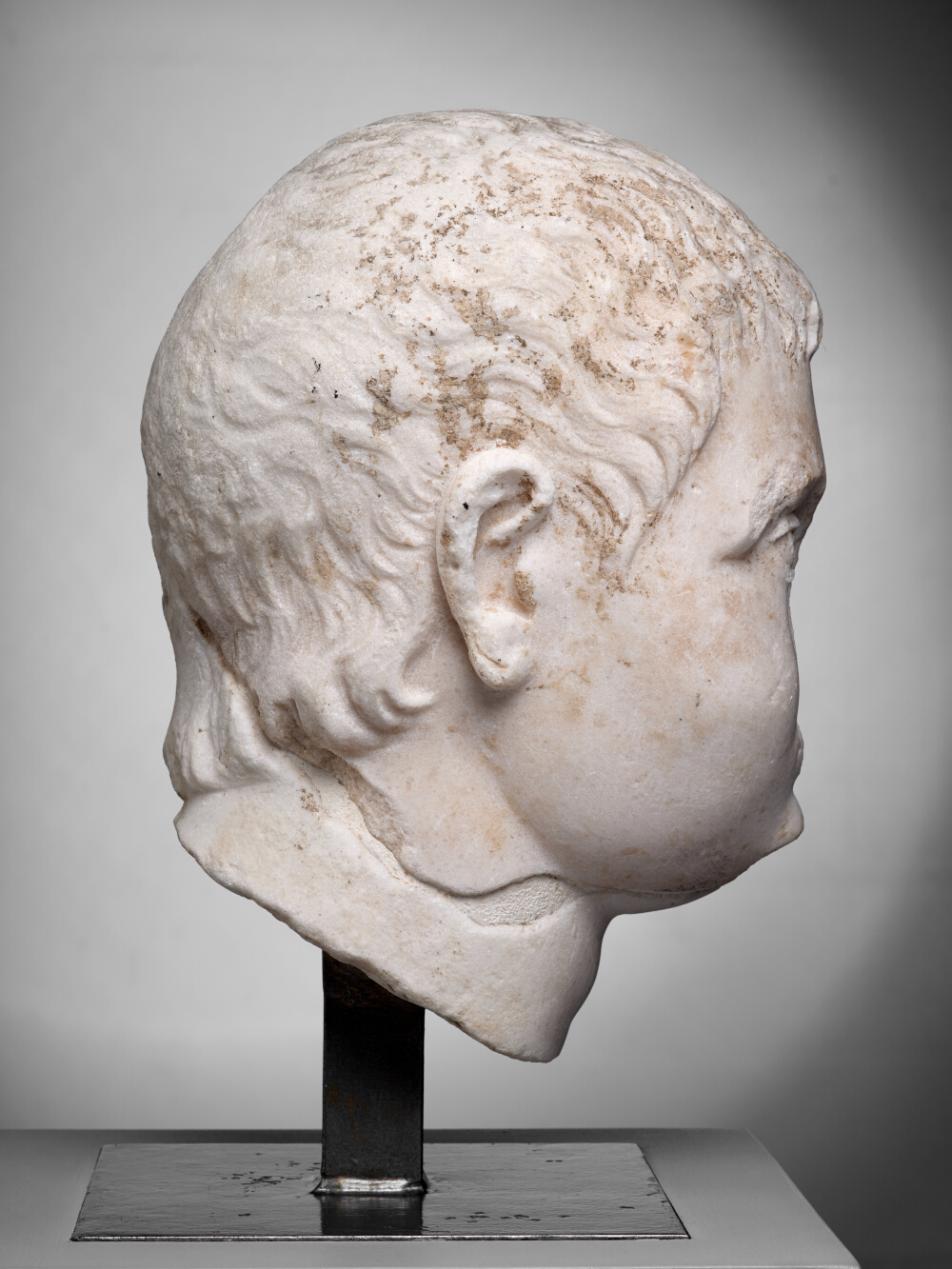
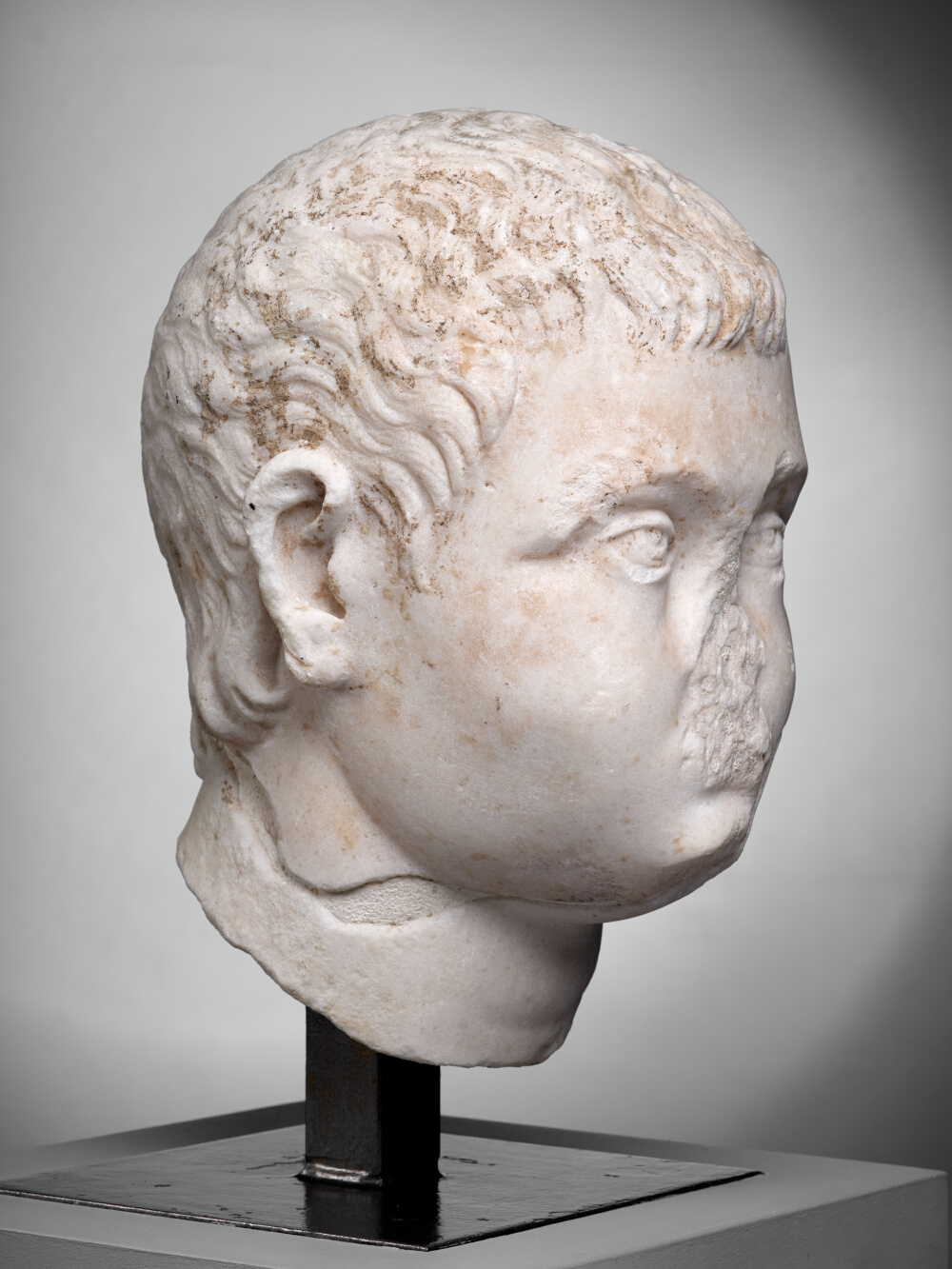
- Biographic data
- Son of Maximian and Eutropia, around 278-312
Emperor from 306 to 312 - Date de création
- After 293
- Material
- Saint-Béat marble (Haute-Garonne)
- Dimensions
- H. 33 x l. 22 x P. 23 (cm)
- Inventory number
- Ra 93 ter
- Photo credits
- Daniel Martin
The hair here is depicted in the same way as that of the colossal male head, now acknowledged to be that of Maximian Herculius. These details, and others, allow us to assume that we are in the presence of the heir Maxentius, son of Maximian, who was also to reign but over a limited territory (at most Italy and the African provinces, which supplied Rome with wheat and oil). Five (and perhaps six) 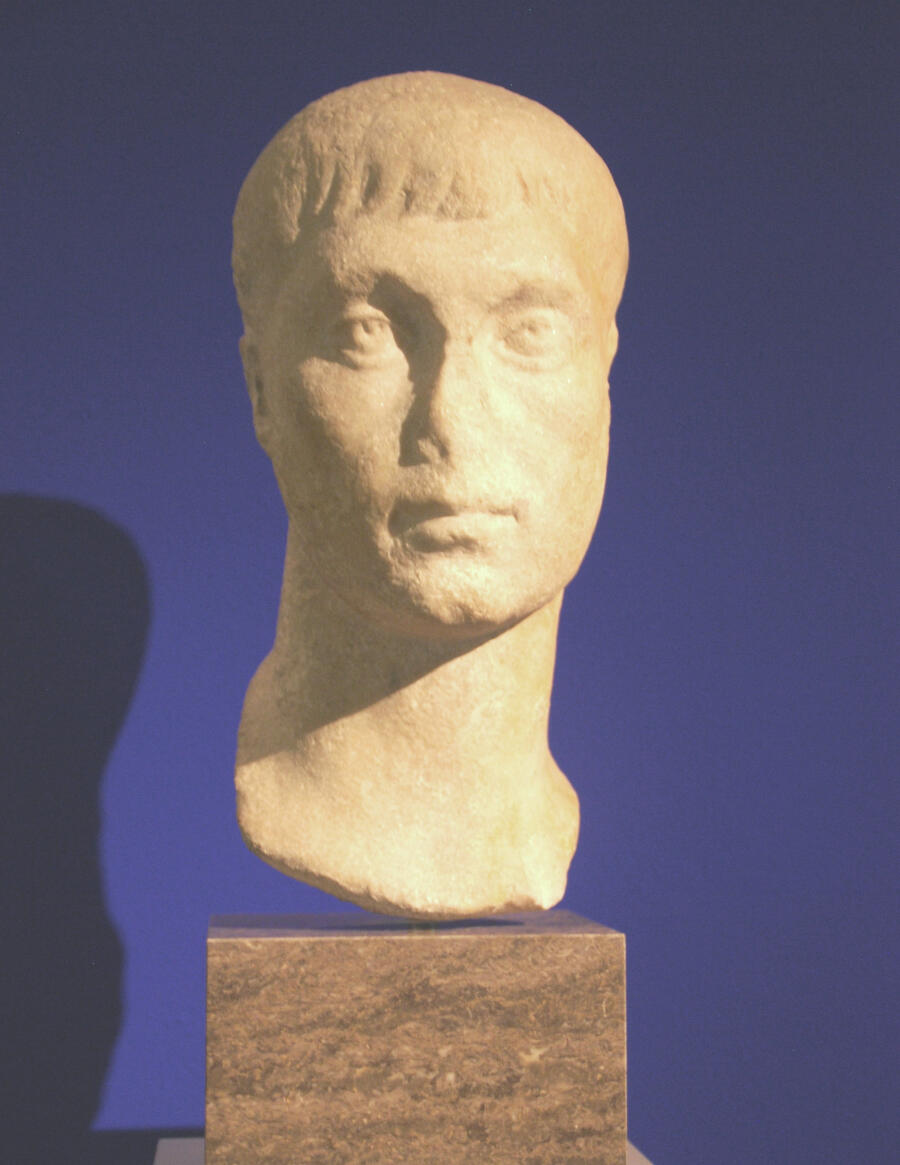 sculpted portraits of the adult Maxentius have been identified to date, but this is the head of an adolescent. The work may correspond to the time of his betrothal to Valeria Maximilla in 293, or shortly afterwards. He would therefore have been at least 13 or 14 years old.
sculpted portraits of the adult Maxentius have been identified to date, but this is the head of an adolescent. The work may correspond to the time of his betrothal to Valeria Maximilla in 293, or shortly afterwards. He would therefore have been at least 13 or 14 years old.
According to J.-C. Balty, Les portraits romains, La Tétrarchie, 1.5 (Sculptures antiques de Chiragan (Martres-Tolosane), Toulouse, 2008, p. 75-90.
Bibliography
- Ensoli, La Rocca 2000 S. Ensoli, E. La Rocca (eds.), Aurea Roma : dalla città pagana alla città cristiana. Mostra, Palazzo delle esposizioni, Roma, 22 dicembre 2000-20 aprile 2001, Rome. p. 459, no 58
- Balmelle 2001 C. Balmelle, Les demeures aristocratiques d’Aquitaine : société et culture de l’Antiquité tardive dans le Sud-Ouest de la Gaule (Mémoires 5 – Aquitania, suppl. 10), Bordeaux-Paris. p. 230-231, fig. 125 c
- Balty, Cazes 2008 J.-C. Balty, D. Cazes, Les portraits romains, 1 : La Tétrarchie, 1.5 (Sculptures antiques de Chiragan (Martres-Tolosane), Toulouse. p. 18-19, 76, 79-80, fig. 50, p. 82, fig. 53, p. 84, fig. 55, p. 86, fig 59, p. 89, fig. 65,67, p. 90
- Bergmann 1999 M. Bergmann, Chiragan, Aphrodisias, Konstantinopel : zur mythologischen Skulptur der Spätantike (Palilia), Wiesbaden. p. 34, 40-41
- Cazes et al. 1999 D. Cazes, E. Ugaglia, V. Geneviève, L. Mouysset, J.-C. Arramond, Q. Cazes, Le Musée Saint-Raymond : musée des Antiques de Toulouse, Toulouse-Paris. p. 145
- Christof 2003 E. Christof, « Ein unerkanntes spatantikes Monument aus Mittelgriechenland: Die Portratsaule von Ag. Konstantinos, » Boreas. Münstersche Beiträge zur Archäologie, 26, pp. 49–54. p. 49-54, ill. tafel 14
- Joulin 1901 L. Joulin, Les établissements gallo-romains de la plaine de Martres-Tolosane, Paris. p. 340, pl. XXV, no 328
- Massendari 2006 J. Massendari, La Haute-Garonne : hormis le Comminges et Toulouse 31/1 (Carte archéologique de la Gaule), Paris. p. 248, fig.114
- Rosso 2006 E. Rosso, L’image de l’empereur en Gaule romaine : portraits et inscriptions (Archéologie et histoire de l’art), Paris. p. 489-490, no 238
- Musée Saint-Raymond 1995 Musée Saint-Raymond, Le regard de Rome : portraits romains des musées de Mérida, Toulouse et Tarragona. Exhibition, Mérida, Museo nacional de arte romano ; Toulouse, Musée Saint-Raymond ; Tarragone, Museu nacional arqueològic de Tarragona, 1995, Toulouse. p. 236, no 172
To cite this notice
Capus P., "Juvenile head of Maxentius (?)", in The sculptures of the roman villa of Chiragan, Toulouse, 2019, online <https://villachiragan.saintraymond.toulouse.fr/en/ark:/87276/a_ra_93_ter>.